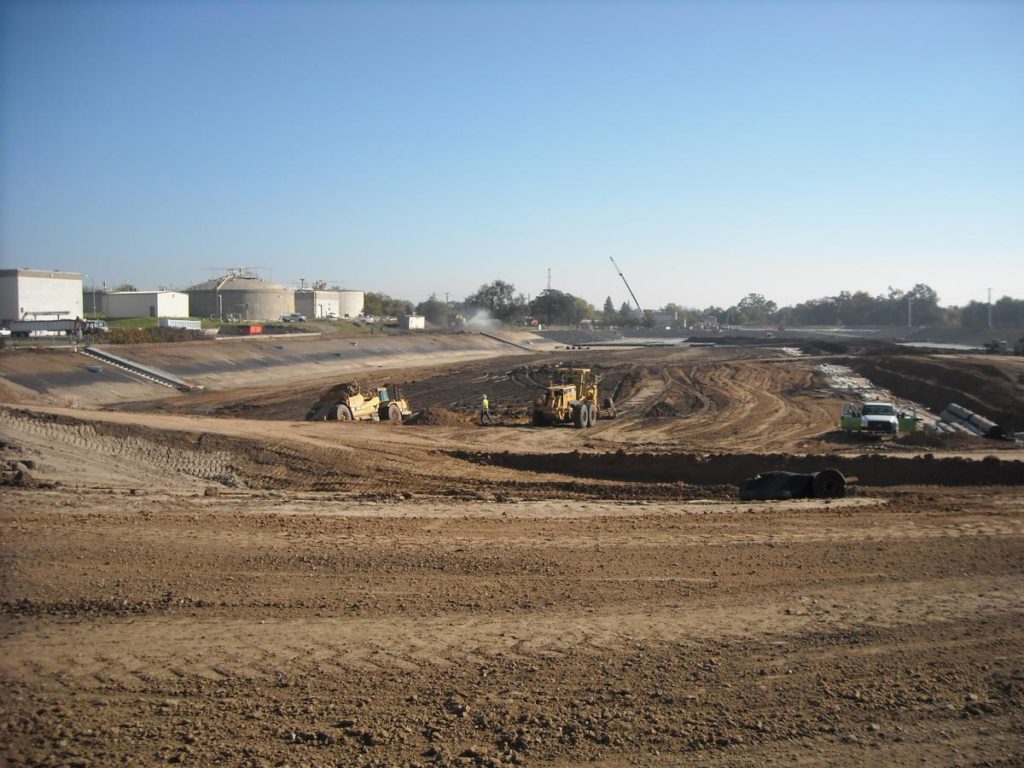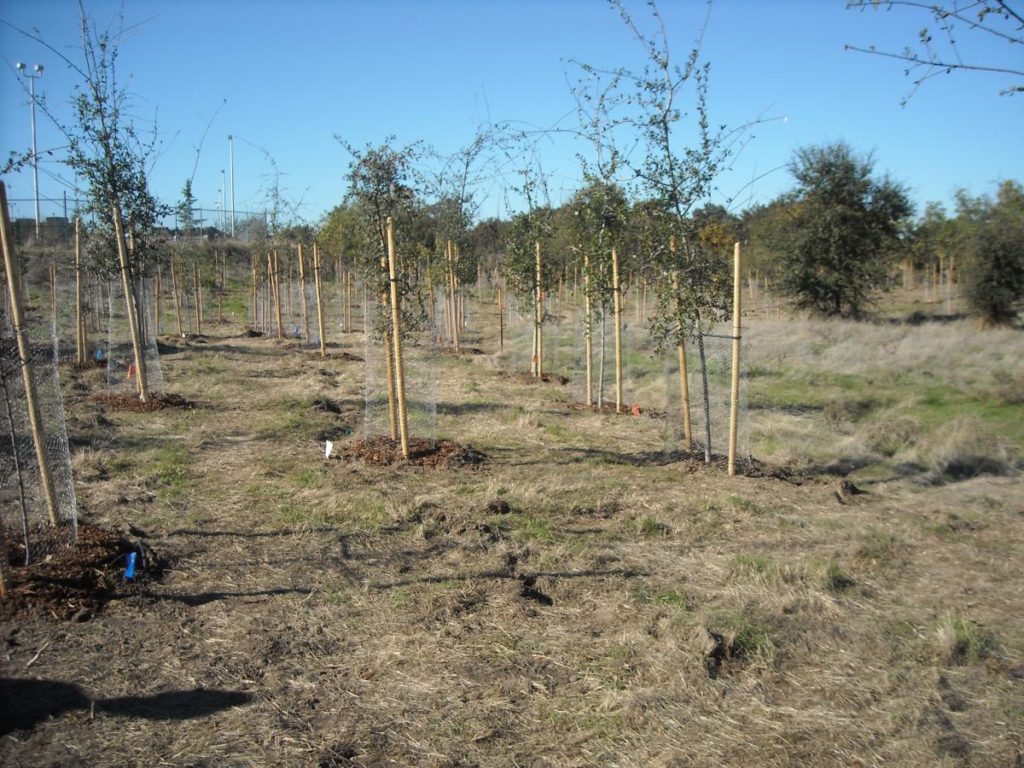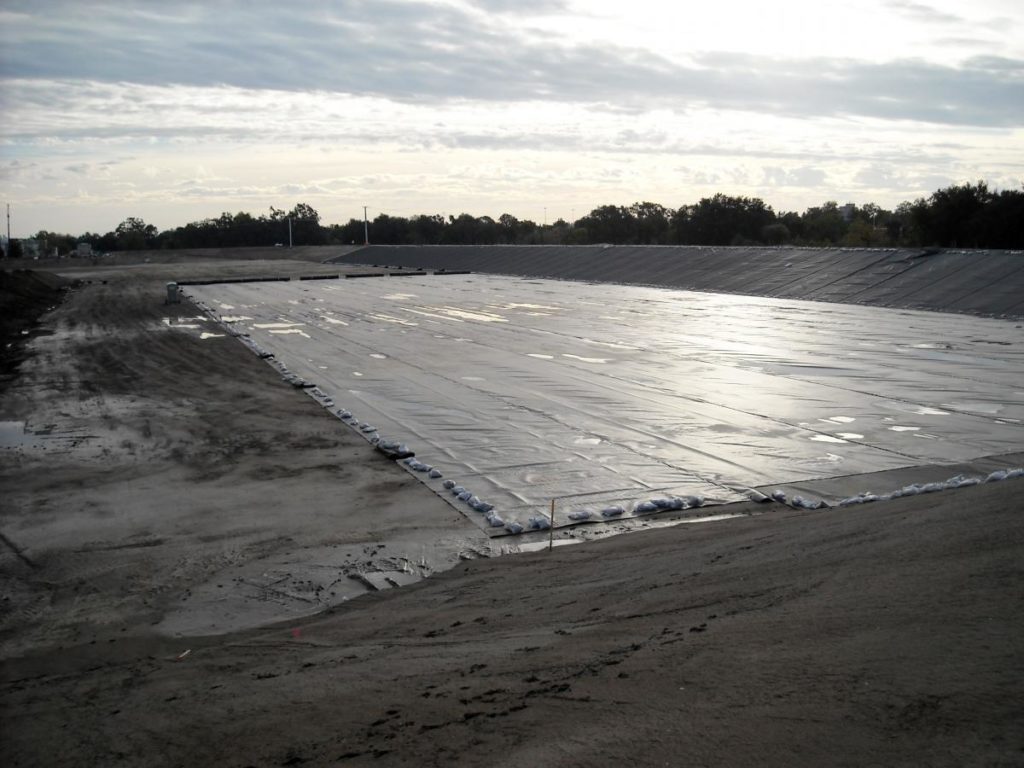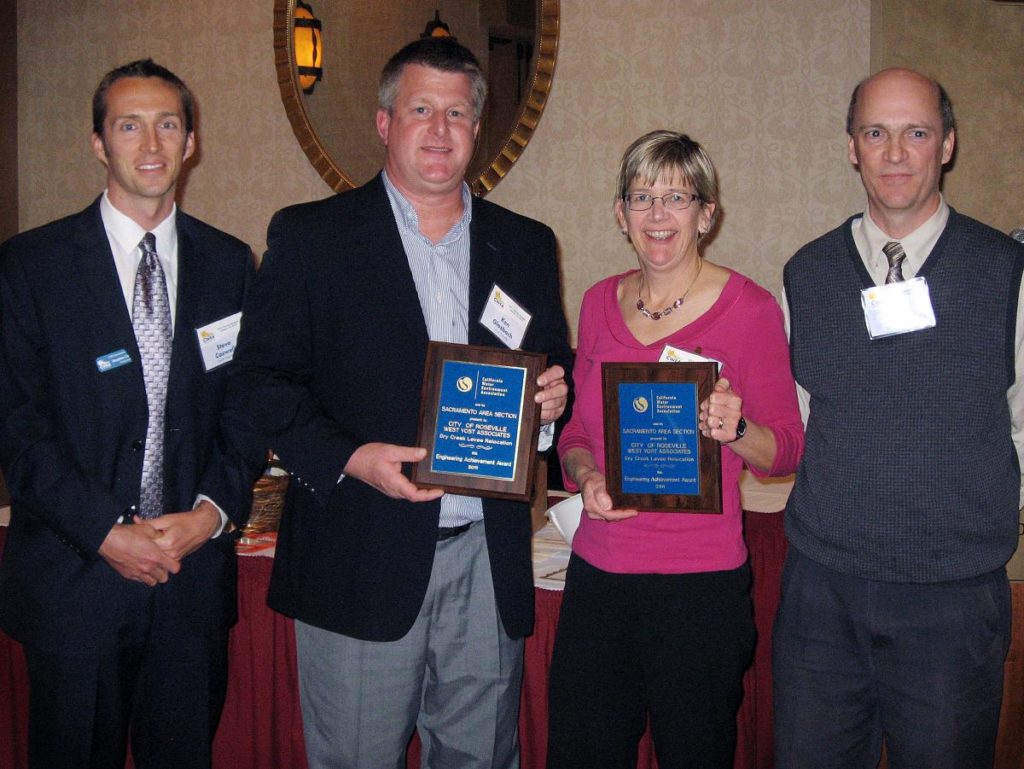Award: Flood Control at WWTP Receives CWEA SAS Award

Flood Control Project at City of Roseville’s Dry Creek Wastewater Treatment Plant, Receives CWEA Sacramento Area Section, Engineering Achievement Award
Protecting the environment at the City of Roseville’s Dry Creek Wastewater Treatment Plant is more than just reliable and effective treatment and disposal of wastewater. It also includes protecting the surrounding natural environment, habitat, and groundwater.
About once every 15 to 20 years, Dry Creek flooded the headworks area and the wastewater storage ponds at the City of Roseville Dry Creek WWTP. If storage ponds had wastewater in them when flooding occurred, untreated/partially treated wastewater discharged into Dry Creek. This project will provide 100-year protection of the headworks/storage ponds by setting the pond levee 160 feet back from the active Dry Creek channel and raising the levee top by about 7 feet. The levee and a floodwall were also extended to enclose/protect the headworks area. By protecting the Dry Creek Wastewater Treatment Plant and wastewater ponds from inundation during 100-year flood events, the project will prevent the release of wastewater to Dry Creek.
This project benefits the water environment and protects local groundwater. In addition, the project protects the environment through mitigation identified as part of the CEQA process. The project included floodplain habitat restoration using only native California vegetation, including planting 248 oak trees (various species), 195 other riparian trees, shrubs, wildflowers, and grasses between the Dry Creek Channel and the relocated pond levee. The restoration also included planting 416 oak trees (various species) at an off-site mitigation area on the opposite bank of Dry Creek. A temporary three-year irrigation system was designed and constructed for both locations.
During the geotechnical investigation of the site, it was determined that there were numerous sandy layers/lenses under the pond area. These permeable layers would jeopardize the new levee and allow wastewater to seep into the underlying groundwater. West Yost evaluated 10 alternatives to address these problems, including combinations of clay, HDPE, and concrete pond liners; soil bentonite slurry cutoff wall versus a vertical geomembrane curtain; groundwater extraction wells; and use of monitoring wells with the hydraulic counterbalancing of the underlying groundwater pressures. A dynamic groundwater model of the creek-groundwater-pond system was developed and the hydraulic counter balancing system was recommended. This approach saved about $500 thousand to $7.9 million over the other alternatives.
West Yost managed the CEQA review, public participation, and permitting elements of this project, and presented the project at two public meetings. West Yost also provided engineering services during construction and full-time construction inspection/management to ensure the facilities were constructed correctly.




